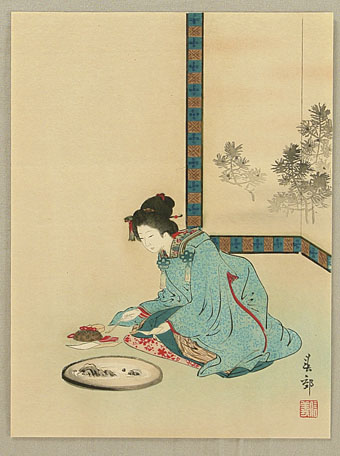
Miniature Zen Garden (1895) by Unknown.
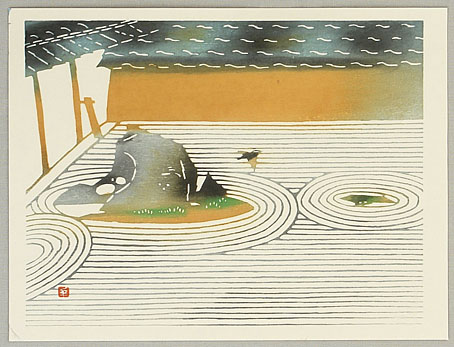
Ryoan-ji Temple (Mid-20th C.) by Inagaki Toshijiro.
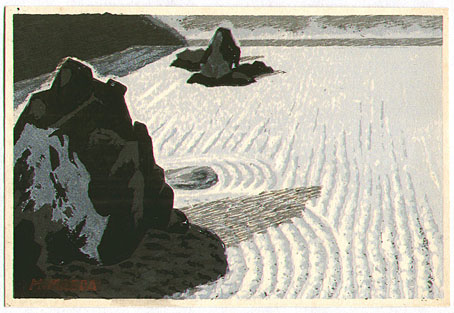
Ryoan-ji Temple (Mid-20th C.) by Maeda Masao.
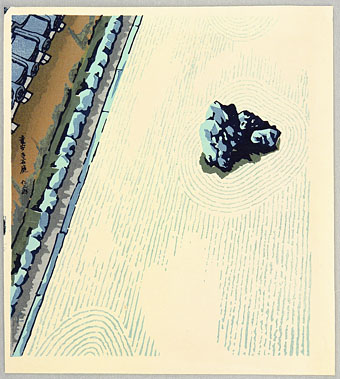
Stone Garden of Ryoan-ji Temple (c.1950s) by Ito Nisaburo.
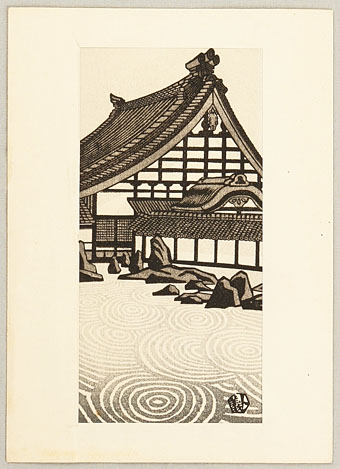
Ryoan-ji Zen Garden (c.1950s) by Okuyama Gihachiro.
A journal by artist and designer John Coulthart.

Miniature Zen Garden (1895) by Unknown.

Ryoan-ji Temple (Mid-20th C.) by Inagaki Toshijiro.

Ryoan-ji Temple (Mid-20th C.) by Maeda Masao.

Stone Garden of Ryoan-ji Temple (c.1950s) by Ito Nisaburo.

Ryoan-ji Zen Garden (c.1950s) by Okuyama Gihachiro.
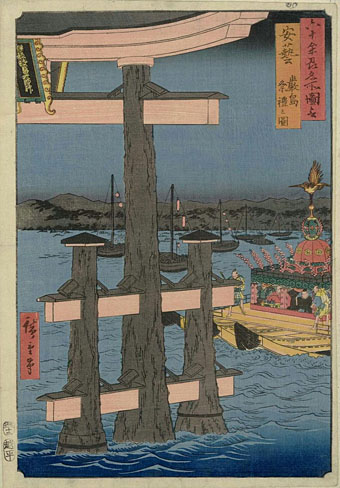
Aki Province: Itsukushima, Depiction of a Festival, from the series Famous Places in the Sixty-odd Provinces (1853) by Utagawa Hiroshige.
The most recognizable and celebrated feature of the Itsukushima shrine, is its fifty-foot tall vermilion otorii gate (“great gate”), built of decay-resistant camphor wood. The placement of an additional leg in front of and behind each main pillar identifies the torii as reflecting the style of Ryobu Shinto (dual Shinto), a medieval school of esoteric Japanese Buddhism associated with the Shingon Sect. The torii appears to be floating only at high tide. When the tide is low, it is approachable by foot from the island. Gathering shellfish near the gate is also popular at low tide. At night, powerful lights on the shore illuminate the torii. Although the gate has been in place since 1168, the current gate dates back only to 1875. [more]
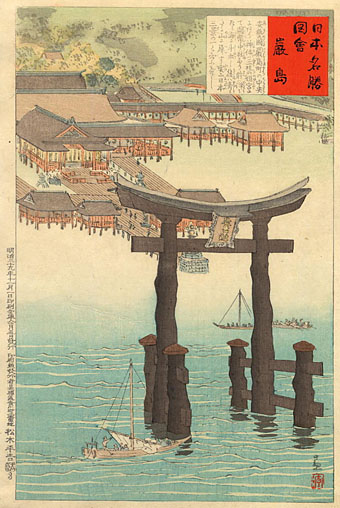
Torii at Itsukushima (1896) by Kobayashi Kiyochika.

Deer and Torii (1910) by Shoson Ohara.
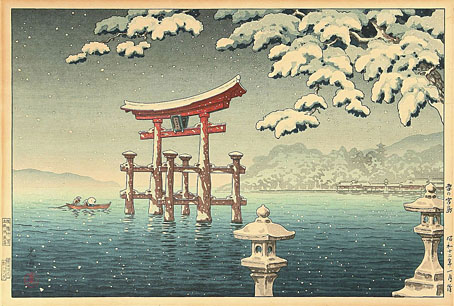
Miyajima in Snow (1934) by Tsuchiya Koitsu.
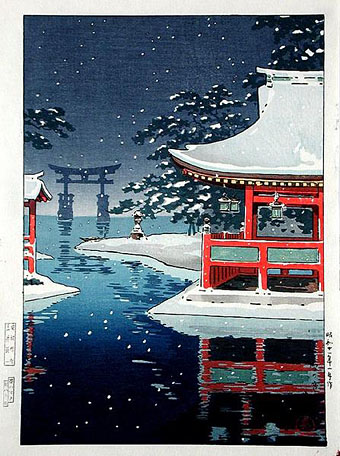
Snowy Miyajima (1936) by Tsuchiya Koitsu.